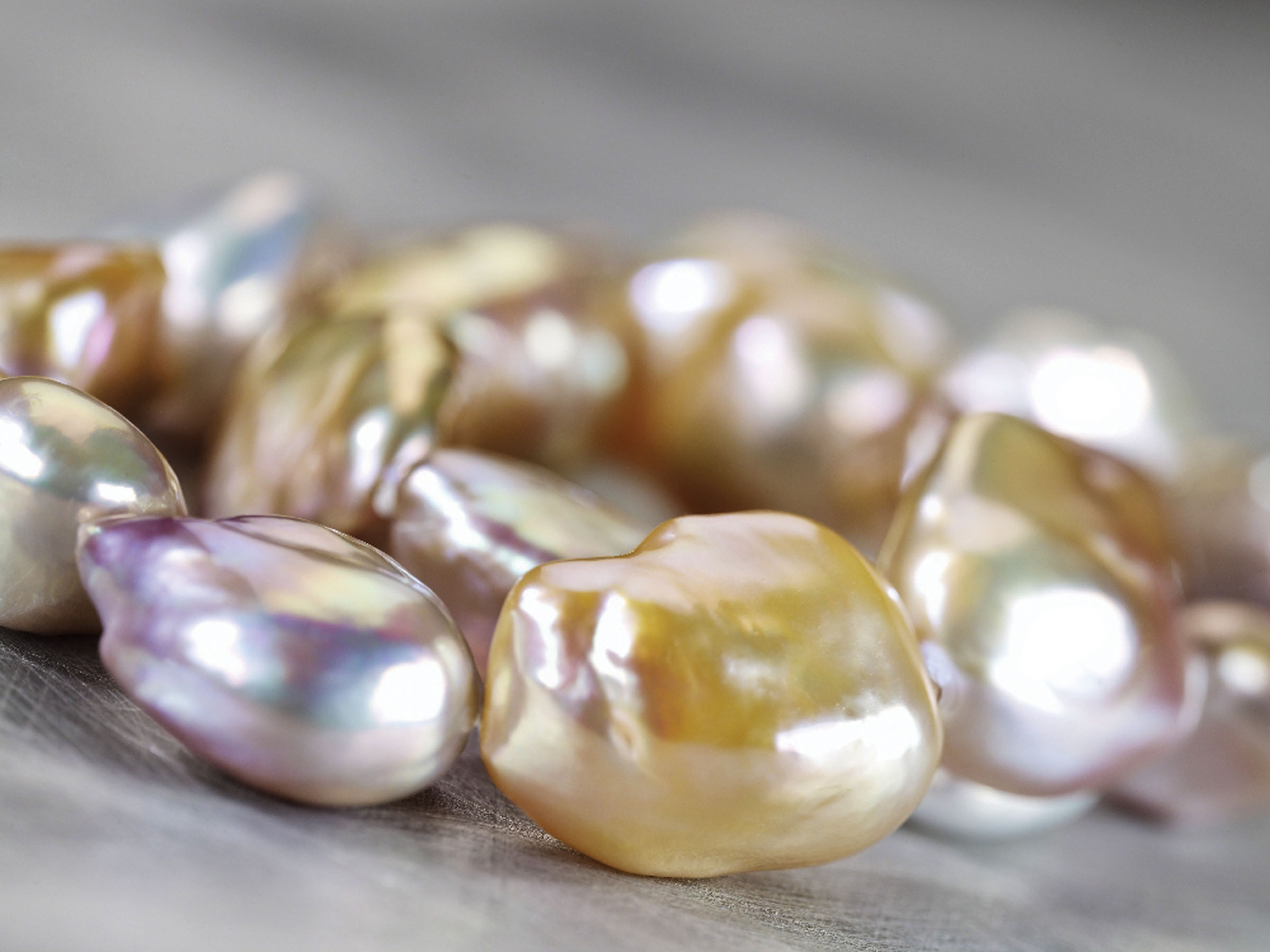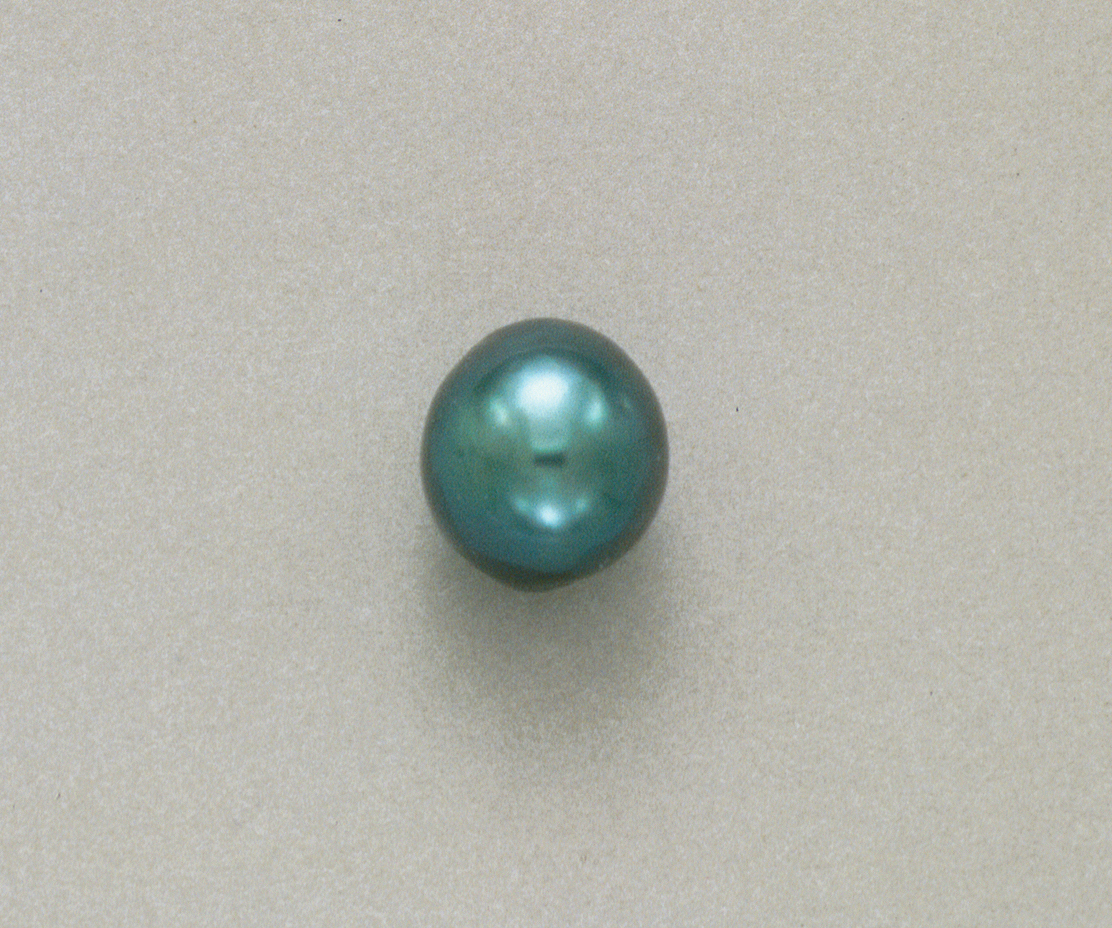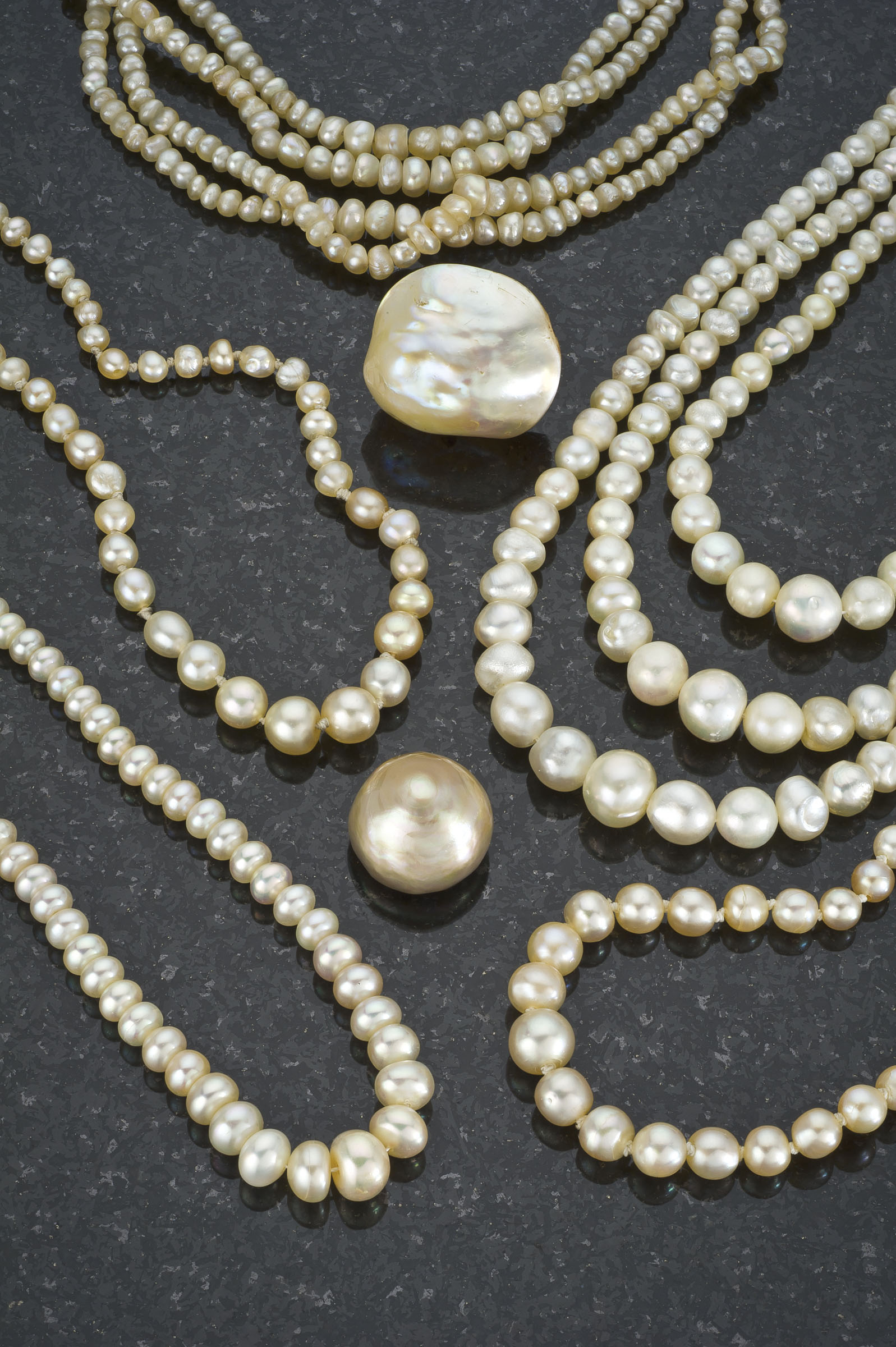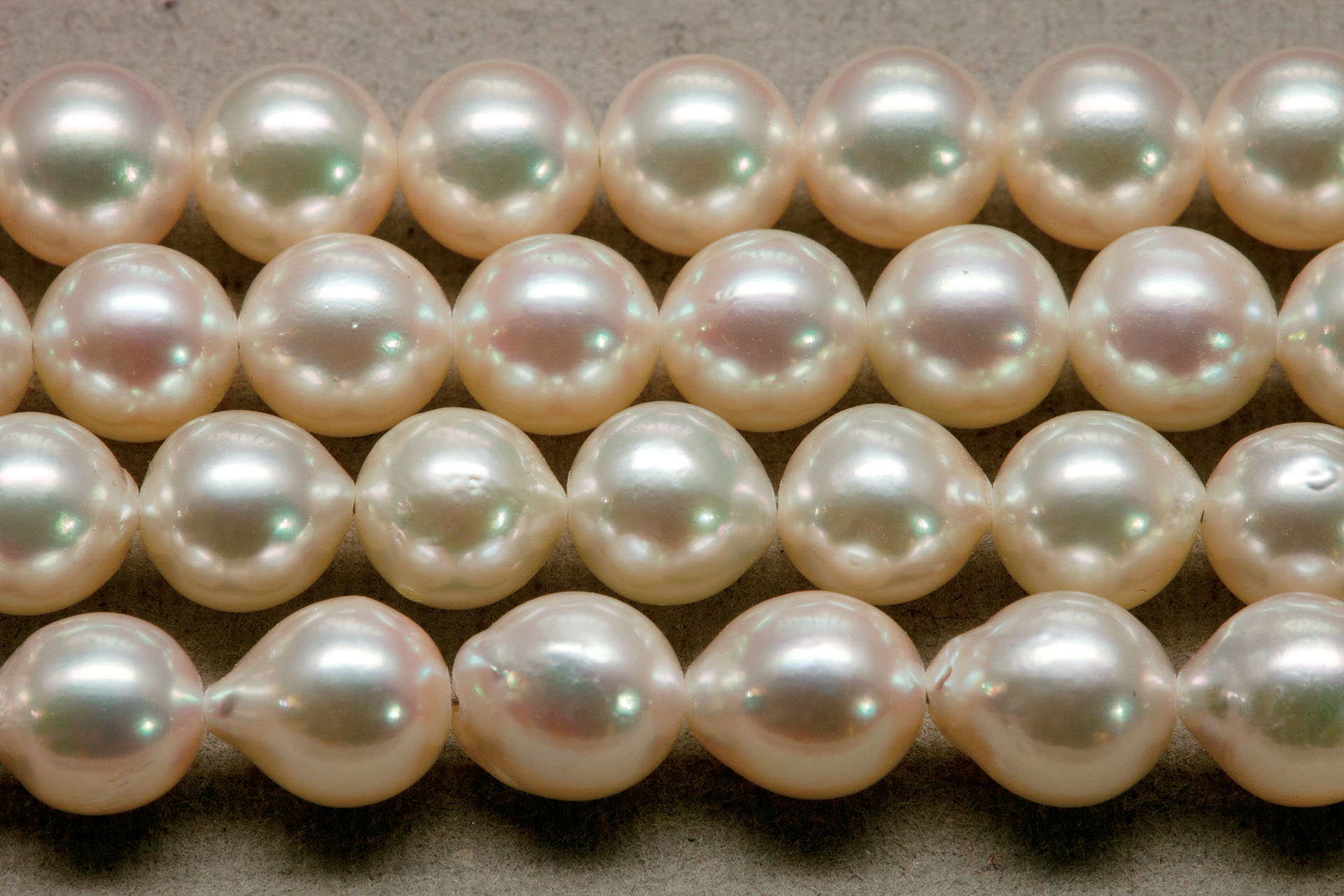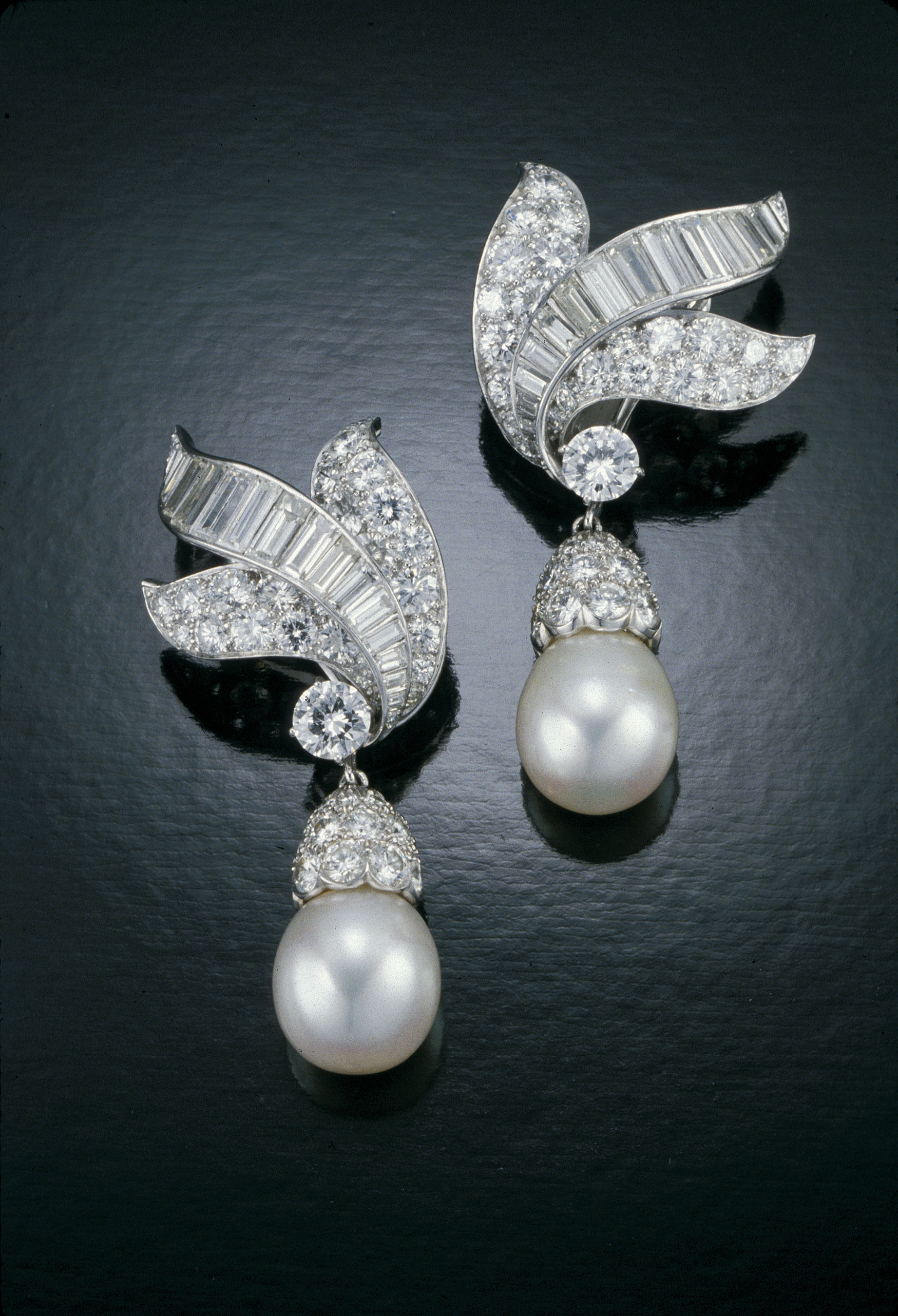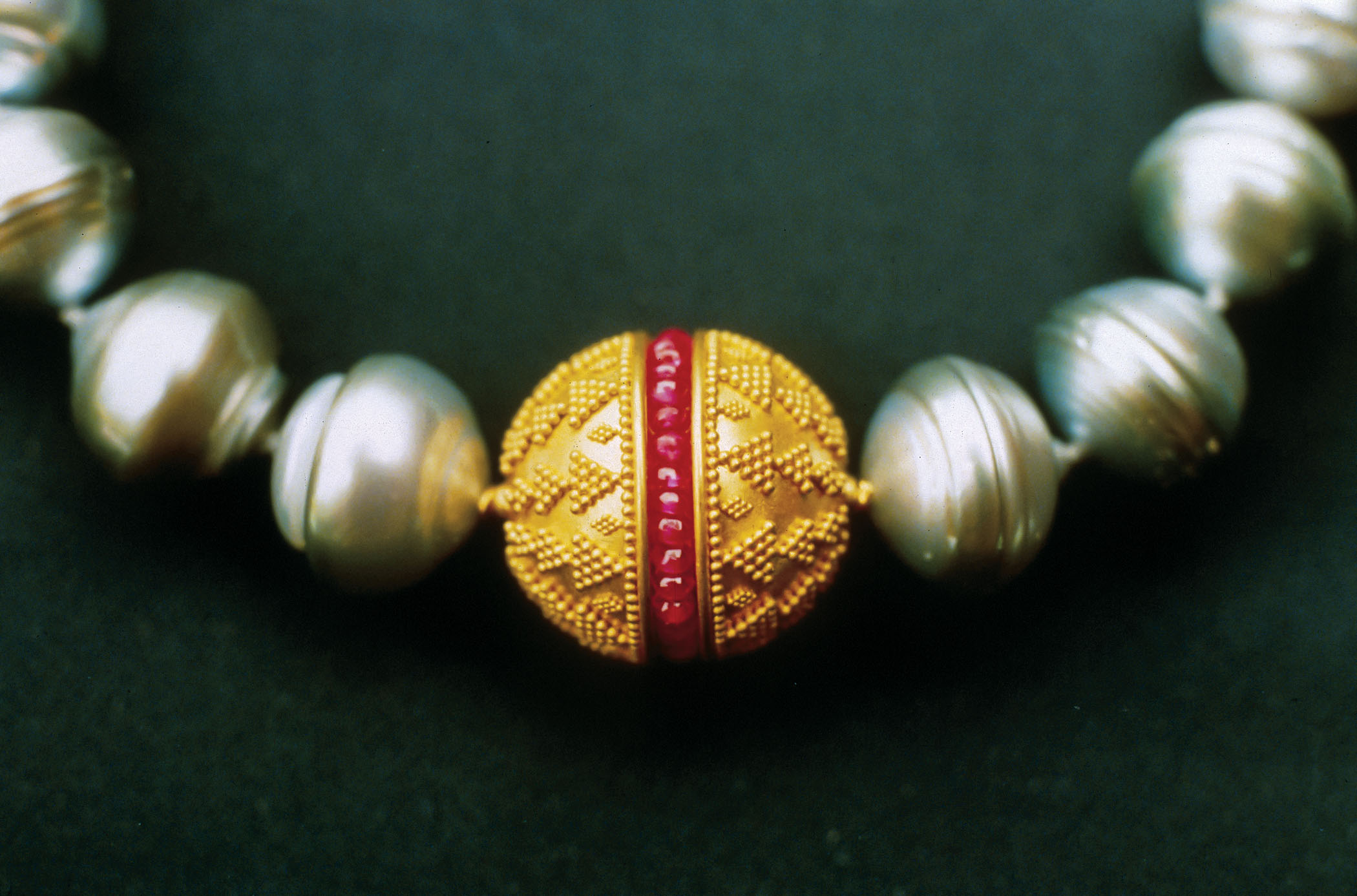A perfectly round pearl that excels in every applicable value factor is a truly beautiful thing. But it’s also extremely rare. The GIA Pearl Description System recognizes seven standard pearl shapes:
Round—Appears round, with no variations, to the unaided eye.
Near-round—Appears almost round, with minor variations, to the unaided eye. Some might be slightly out-of-round, elongated, or flattened.
Oval—Appears symmetrical, rounded, and oblong.
Button—Appears symmetrical, circular, and flattened or slightly flattened. Can be a high button or low button.
Drop—Appears symmetrical, rounded, and pear-shaped. Can be a long drop or a short drop.
Semi-baroque—Appears not quite symmetrical: an off-round, slightly irregular drop, button, or oval shape.
Baroque—Has no apparent symmetry and is noticeably irregular.
Any shapes other than these are described as they appear—bar, cross, and coin shapes, for example.
The system divides the seven pearl shapes into three major categories: spherical, symmetrical, and baroque. Spherical pearls are either round or near-round. Symmetrical pearls are shapes that look the same on each side if you divide them in half. This category includes ovals, buttons, and drops. The baroque category includes baroque and semi-baroque shapes.
Some pearls have one or more grooves and ridges around all or part of their circumferences. If the grooves and ridges go all the way around, it’s described as a circled pearl. The correct way to describe such a pearl is to combine the circled modifier with the shape description. For example, “circled near-round” or “circled drop.”
The round shape as the ideal, most rare, and most valuable began with natural pearls. It’s highly unlikely for a round pearl that excels in all value factors to form naturally in a wild mollusk. The combination of quality and rarity makes such a natural pearl extremely valuable.
A round gem-quality cultured pearl is less rare than its natural counterpart, but it’s still the rarest and most valuable cultured pearl shape. Generally, and when other value factors are equal, near-round shapes follow next in value, then other symmetrical shapes, and, finally, semi-baroques and baroques.
Gem-quality drop-shaped pearls can sometimes rival rounds in value. A single perfect long drop has a grace and beauty that can raise its value to the level of a perfect round.
